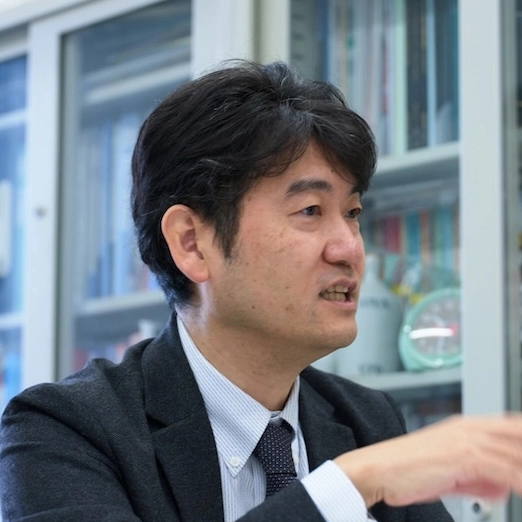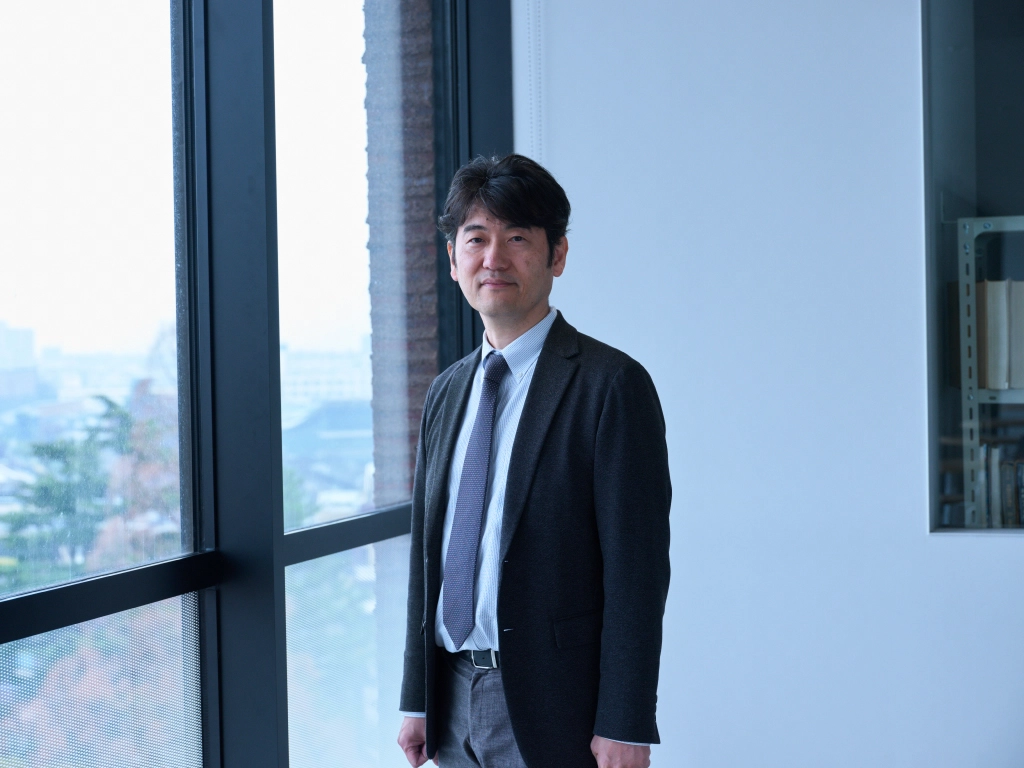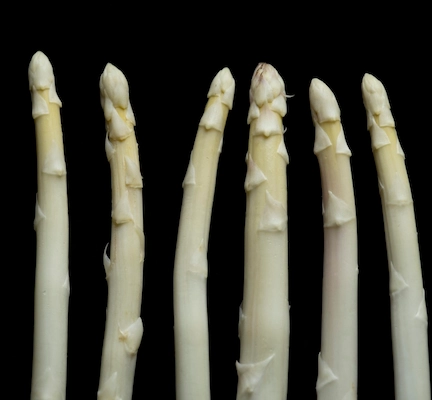Feature
Why Is Soy Sauce Good? Exploring Japanese Fermentation Culture Through Seasonings

Index
The Decomposition Power of Koji Rice Supports Japan, the Fermentation Superpower
Japanese Soy Sauce Is Respected Around the World
We Don’t Know Why It’s Good for Your Health: The Mystery of Fermentation
Soy sauce, miso, natto, sake, and other fermented foods are indispensable to our dining tables.
With its rich culture of fermented foods, Japan is now recognized as a “fermentation superpower,” attracting global attention.
While fermented foods are found all over the world, no other country has produced such a wide variety of fermented seasonings as Japan. Dr. Kenji Maehashi, a leading researcher on fermented seasonings in Japan and a professor in the Department of Fermentation Science at the Tokyo University of Agriculture, highlights this unique diversity.
How did the complex and rich flavors, produced from minimal ingredients, along with their wonderful health benefits, come about?
We invite you to explore and taste the amazing power of fermented seasonings, the pride of Japan.
The Decomposition Power of Koji Rice Supports Japan, the Fermentation Superpower
Japan is often referred to as a fermentation superpower due to its rich variety of fermented foods. How do Japanese fermented foods compare to those from other countries?

Maehashi
Natto (fermented soybeans) and pickles have long been staples in Japan. In terms of seasonings, Japan offers a remarkable variety, including miso, soy sauce, mirin, and different types of vinegar. Additionally, Japan produces a range of alcoholic beverages such as sake and shochu, along with non-alcoholic options like amazake. These fermented products can be broadly classified into four categories: seasonings, foods, alcoholic beverages, and non-alcoholic beverages.
Globally, major fermented foods include cheese, yogurt, sausages, aged meats, and fermented fish. Fermentation originally served as a method for preserving food, leading to a wide array of fermented products worldwide. Alcoholic beverages, which naturally result from the fermentation of sugars, are found in nearly every culture. Vinegar is also a global staple. However, Japan distinguishes itself with the greatest variety of fermented seasonings, making it unique in its culinary offerings.
You mentioned that fermented foods exist globally, but are there any regions in the world where they are not consumed?

Maehashi
No, I don't believe there is any place in the world where people don’t consume fermented foods. Fermentation is both a natural phenomenon and a traditional processing technique. While modern science and technology might allow for a diet without fermented foods today, it is unlikely that people in the past could have avoided them entirely as stored foods naturally undergo fermentation.

What are the differences in seasonings between Japan and other countries?

Maehashi
Generally speaking, when we think of seasonings, salt, sugar, and spices are the most common. Although not typically classified as seasonings, sauces play a crucial role in French cuisine, where they create flavor by blending broths from various ingredients—a rational approach to enhancing deliciousness.
In contrast, seasonings are the foundation of Japanese cuisine. Soy sauce and miso, made from rice, wheat, or soybeans, derive their flavor through fermentation. Japanese fermentation technology excels at creating complex flavors from minimal ingredients, eliminating the need for blending. This is a distinctive feature of Japanese culinary practice.
Fermented seasonings significantly influence Japanese food culture. Japanese cuisine, known for its simplicity, achieves complexity through these seasonings. Unlike Western cuisine, which layers flavors, Japanese food develops depth by breaking down simple ingredients into more intricate tastes. This fundamental difference underscores the distinctive approach to seasoning in Japanese cuisine.
Unlike food products, there aren’t many countries, aside from Japan, that boast an abundance of fermented seasonings, you say?

Maehashi
In many countries, you’ll find grain-based beverages like alcohol and dairy products like yogurt, but fermented seasonings are a rarity. Vinegar stands as the exception, being popular in nearly every corner of the globe. Where there’s alcohol, there’s almost always vinegar.
While fermented seasonings also have deep roots in the food cultures of Asian countries, the variety found elsewhere pales in comparison to Japan’s rich assortment. It’s a rarity to encounter the same breadth of flavors as those produced in Japan.
This discrepancy arises because yeast and lactic acid bacteria are the primary agents of fermentation worldwide. Given their natural occurrence, they’re commonly utilized. Fermented foods using these agents can be found globally.


Maehashi
In addition to yeast and lactic acid bacteria, Japanese fermented foods frequently employ koji mold. While originating in China, the Japanese have refined and perfected koji cultivation. Miso, soy sauce, sake, and vinegar in Japan are all products of koji.
One of the remarkable traits of koji is its decomposing prowess. It breaks down ingredients both horizontally and vertically, enhancing complexity. Japanese brewing pioneers recognized koji’s flavor-enhancing abilities long before the concept of microorganisms emerged.

When was the mechanism of fermentation discovered?

Maehashi
The mechanism of fermentation was first discovered overseas in 1860, marking a pivotal moment in our understanding of this process. In Japan, the concept of an invisible force at work was initially inconceivable. However, with the arrival of foreign researchers around the beginning of the Meiji period, the existence of koji mold was revealed, spurring advancements in research.
Prior to this revelation, sake brewing faced challenges from sake spoilage by hiochi, a type of lactic acid bacteria that caused souring. Given sake’s significance as a source of tax revenue, foreign researchers were brought in, and nationwide efforts were made to enhance sake production. This collaborative endeavor led to significant improvements in sake brewing technology, laying the foundation for modern sake production techniques.
Historically, vinegar production was a straightforward process: “Put rice, koji, and water in a jar, and it will naturally ferment into sake, eventually turning into vinegar.” However, the quality of vinegar we enjoy today cannot be achieved through such simplistic means. The refinement of vinegar production occurred with the development of technology to cultivate acetic acid bacteria successfully within sake.
The techniques used in the production of sake and fermented seasonings as we know them today were established from the late Edo period to the early Meiji period.

Japanese Soy Sauce Is Respected Around the World
What effects in flavor does fermentation with koji mold create?

Maehashi
Koji mold is the starting point for making soy sauce, enhancing both its flavor and aroma to create a complex and elegant profile. Foreign soy sauces, which are often less fermented, still have umami but tend to be saltier and less aromatic. The rich aroma of Japanese soy sauce results from thorough yeast fermentation.
While it may be an extreme example, there is a soy sauce made in Hawaii known as Aloha Soy Sauce.


Maehashi
Soy sauce consumed abroad is typically thick and salty. In contrast, Japanese soy sauce contains a high amount of amino acids and glutamic acid, thanks to the action of koji mold, which gives it a pleasant aroma. Lactic acid bacteria also contribute to the flavor, resulting in a robust taste that is not merely salty. Nowhere else in the world is soy sauce made with such sophistication as in Japan.
Since the advent of koikuchi soy sauce (the most common type) in the Edo period, leading Japanese soy sauce makers have continuously refined their processes to create a superior product. They have meticulously studied every aspect of soy sauce production, from the optimal boiling time for soybeans to the precise amount of koji to add, all in the pursuit of the best taste.
Interestingly, there is a theory that Worcestershire sauce in the West was inspired by Japanese soy sauce. It is said that people remarked, “There is a black, delicious liquid in Japan,” and attempted to recreate it, resulting in Worcestershire sauce. Come to think of it, naturally boiled sauces would not achieve that same color.
Soy sauce and vinegar are available in other countries, but what about miso?

Maehashi
Miso was originally introduced from China, making it readily available there. It’s also commonly found in Korea and Taiwan, but not prevalent in the West.
Originally, hishio, salted soybeans from China, served as the precursor to Japanese miso. It was through this lineage that Japanese miso, utilizing koji rice, was born. While China primarily used koji barley and beans, in Japan, miso emerged with koji rice, eventually becoming the standard across all miso varieties. In this regard, it’s fair to credit Japan as the birthplace of miso.
In Japan, only purified koji mold spores are utilized to cultivate clean koji mold. This process is a testament to Japan’s unique technological advancements in koji production.

We Don’t Know Why It’s Good for Your Health: The Mystery of Fermentation
When did the technology become established?

Maehashi
The use of koji rice in sake production dates back to the Heian period, so it must have been established around that time. One theory suggests that mold grew on rice used for offerings, leading to the development of koji.
In China, koji was traditionally grown on rice in the form of dumplings, whereas in Japan, koji is grown on individual grains of rice. Interestingly, the type of mold that develops differs between these forms. Eventually, this process became an established technology, giving rise to advanced brewing techniques.
Considering that fermented foods were produced at a time when the existence of microorganisms was unknown, was it accidental?

Maehashi
Perhaps, but we don’t know for sure. There is a story that “mold grew out of an offering and they happened to find it,” but it’s unclear if that is true. Eating mold is still a risky proposition. The global standard is that mold is poisonous, yet Japanese people have been consuming mold since ancient times, even without knowing its potential dangers.
It is a wonder why they ate it.

Maehashi
It likely happened naturally; people discovered that certain molds were safe to eat and didn’t cause illness. This trial-and-error approach would have led to the acceptance of these molds in their diet. The fact that it tasted good and didn’t upset their stomachs probably reinforced its use.
Fermented foods are generally said to be good for health, but is the same true for seasonings?

Maehashi
Even before fermentation, soybeans are a nutritious food, often called “the meat of the field” due to their high protein content. Soybeans have various health benefits, such as lowering cholesterol, inhibiting cancer, and reducing blood pressure.
Since the Edo period, it has been said that “miso is indispensable.” Essentially, miso can be seen as a way to ferment soybeans to enhance their taste, allowing soybeans to be used in a variety of dishes.
However, most of the health benefits of fermented seasonings are known empirically rather than scientifically. Despite the complexity and numerous ingredients in fermented seasonings, not many health-specific substances unique to these products have been identified. Therefore, we can only make a general assessment of the health benefits of miso and soy sauce.
We don’t know exactly what is working, but we know it is healthy. It’s a mystery. It's quite perplexing, isn't it?

Maehashi
We can’t determine it chemically, but the most likely explanation is the presence of beneficial bacteria, a key characteristic of fermented foods. Humans have a large amount of intestinal bacteria and live symbiotically with them. By improving the intestinal environment, immunity is increased. It’s reasonable to assume that consuming fermented foods helps enhance the intestinal environment.
As a defense mechanism, the human body can recognize foreign substances and adjust itself accordingly, whether it’s pollen, dust, or bacteria. Cells recognize these elements and strengthen the immune system. Conversely, when the immune system is weakened, various diseases, such as allergies and hay fever, can arise. Consuming fermented foods introduces a variety of beneficial bacteria into the body, helping to maintain a strong immune system. Overall health maintenance is the primary benefit of fermented foods, and this likely involves immune system support.
Current technology hasn’t fully caught up with the health benefits of fermented seasonings, so I hope to clarify these effects through future research.

Let’s Share!
Fermented seasonings are tasty and healthy thanks to microorganisms!
Share your Monthly JP pavilion and circulate your thoughts.
Related Articles

01/03
A to Z on Japanese Food What Are the Important Elements That Should Be Preserved for Future Generations?
Japanese food is vague and elusive. Its form is constantly changing. It is the “character” that we need to cherish.
Read more
03/03
The Beauty of Microbial Creation: Welcome to the Museum of Fermented Foods by Kaoru, Founder of Dress the Food
Let's take a peek at the formative beauty of fermented foods from the perspective of food director KAORU.
Read more